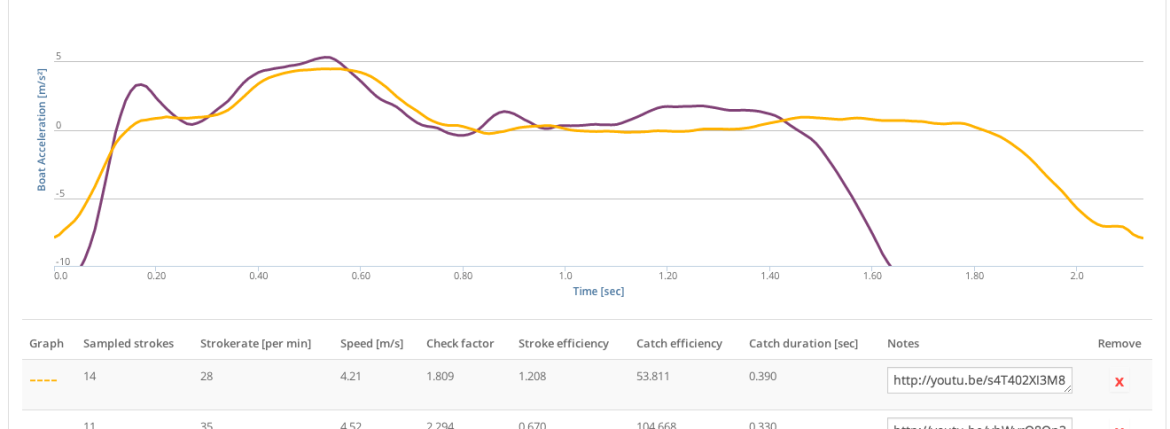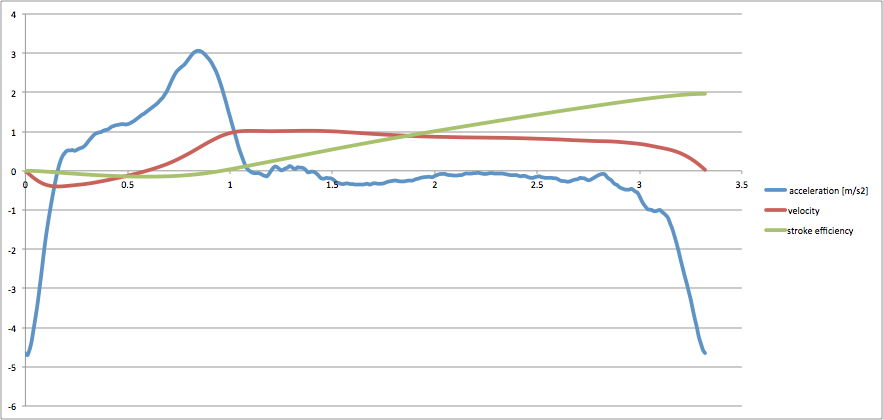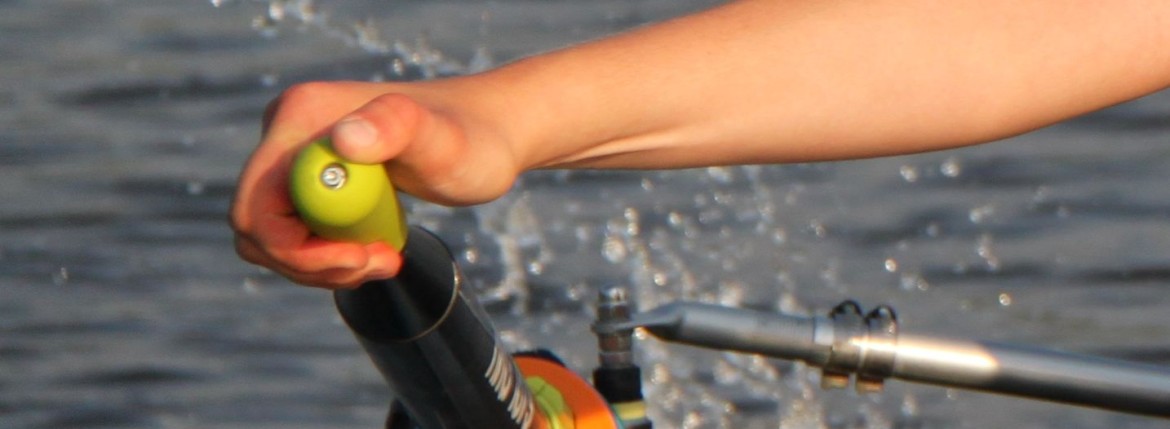Category: Articles
Analyzing Boat Acceleration, a Video Introduction
This video is an introduction to the different phases of the rowing stroke and explains why the typical boat acceleration graph looks the way it does. Additionally, I explain the “secret” behind interpreting boat acceleration graphs and what they tell you about your rowing technique.
Rowing Analysis – Masters 1x
For todays’ blogpost I want to thank Gregory Smith for allowing us to share his rowing data and discuss some of the results and recommendations I gave him to improve his rowing technique. Greg has a very interesting training blog on the indoorsportservice.co.uk forum (community members only) that should give fellow master rowers some good inspiration for training.
Stroke Efficiency Explained
With metrics Rowing in Motion gives you some numeric information about typical strokes and allows you to compare typical strokes beyond the purely visual difference in a graph. The calculations for the metrics are not a secret in any way and we’re happy to share the exact calculations we use. In fact, we believe it is very important that
Rowing Championsleague 2014 Finals Race Analysis
Rowing in Motion supported the finals of the Rowing Championsleague, a new international 350m sprint event in the 8+ where some of the worlds best European Club and University eights competed in a 1:1 knock out system to determine the fastest crew. The finals saw entries from the Netherelands, Great Britain, Hungary, Poland, Czcech Republic, Denmark,
Designing a Measurement System for Rowing: Force and Power on the Oar
In this series of posts I’d like to give you an overview of the Rowing in Motion Sensors, how they work and what considerations we made in designing them. As part of Rowing in Motion’s philosophy to make powerful biomechanic feedback and analysis accessible to coaches and athletes on every level, we hope to shed some light on the secrets of
Designing a Measurement System for Rowing: The different levels of measurements in Rowing
After the previous discussion of desirable properties of measurements in rowing, we will now look at measurements that are commonly performed in rowing and how well these measurements satisfy the above-mentioned properties. For this purpose, we will group them by their level of feasibility and insight that they offer into the rowing stroke. Other posts in this series:
Optimize Your Rowing Stroke with Rowing in Motion
How Rowing Boats move through the Water Rowing Boats do not move at constant velocity. Velocity is constantly changing over the course of a stroke in a rhythmic pattern. The change in velocity is called acceleration. In that variation lays the answer to rowing efficiently and increasing the average speed at which the boat moves towards the
Improve your Stroke – hit the catch
The catch is one of the most critical parts of the rowing stroke cycle. Boat velocity is lowest at the catch, caused by a phase of deceleration when the rower needs to reverse his body’s direction of motion by pushing against the stretcher. This pushing on the stretcher creates a force direct against the boats
Improve your Stroke – maintain boat speed in recovery
This article is partly inspired by an interesting discussion on the decentrowing blog. In the comments, someone brought up a link to a video by Drew Ginn where he advocates accelerating the sliding seat into the catch. This advice seems to be a bit unconvential considering most coaches advocate a constant sliding seat speed into
Improve your Stroke – avoid the drive hump
The Biorow newsletter by Dr. Valery Kleshnev shares great insights derived from scientific research of Rowing. In the November 2012 edition Dr. Kleshnev presents an analysis of the typical patterns of boat acceleration in rowing. What I find particularly interesting is his comparison of olympic and national level crews. Using data that I have recorded



